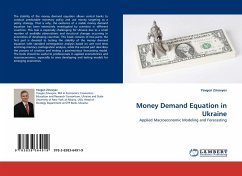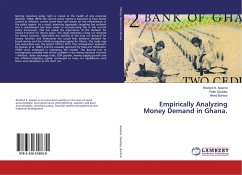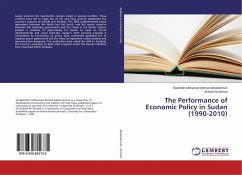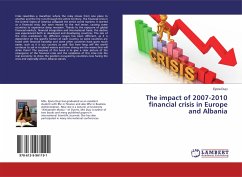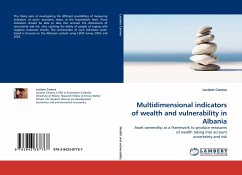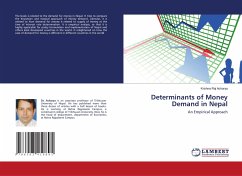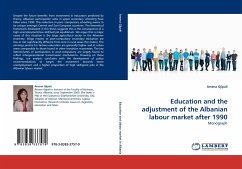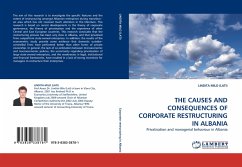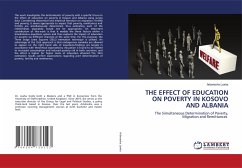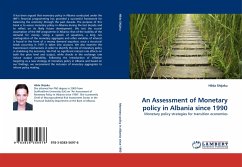
An Assessment of Monetary policy in Albania since 1990
Monetary policy strategies for transition economies
Versandkostenfrei!
Versandfertig in 6-10 Tagen
52,99 €
inkl. MwSt.

PAYBACK Punkte
26 °P sammeln!
It has been argued that monetary policy in Albania conducted under the IMF's financial programming has provided a successful framework for balancing the economy through the past decade. The purpose of this book is to assess monetary policy in Albania during the last decade and to reflect on its likely future development. We test the crucial assumption of the IMF programme in Albania: that of the stability of the demand for money. Using a system of equations, a long run cointegration of the monetary aggregate and other variables of interest is found in the form of a money demand equation, once ...
It has been argued that monetary policy in Albania conducted under the IMF's financial programming has provided a successful framework for balancing the economy through the past decade. The purpose of this book is to assess monetary policy in Albania during the last decade and to reflect on its likely future development. We test the crucial assumption of the IMF programme in Albania: that of the stability of the demand for money. Using a system of equations, a long run cointegration of the monetary aggregate and other variables of interest is found in the form of a money demand equation, once a structural break occurring in 1997 is taken into account. We also examine the transmission mechanisms in order to identify the role of monetary policy in stabilising the economy. We find no significant interest rate effects on both the price level and output, while shocks in the exchange rate induce output variability. Following the introduction of inflation targeting as a new strategy of monetary policy in Albania and based on our findings, we recommend the inclusion of monetary aggregates to inform policy making.



